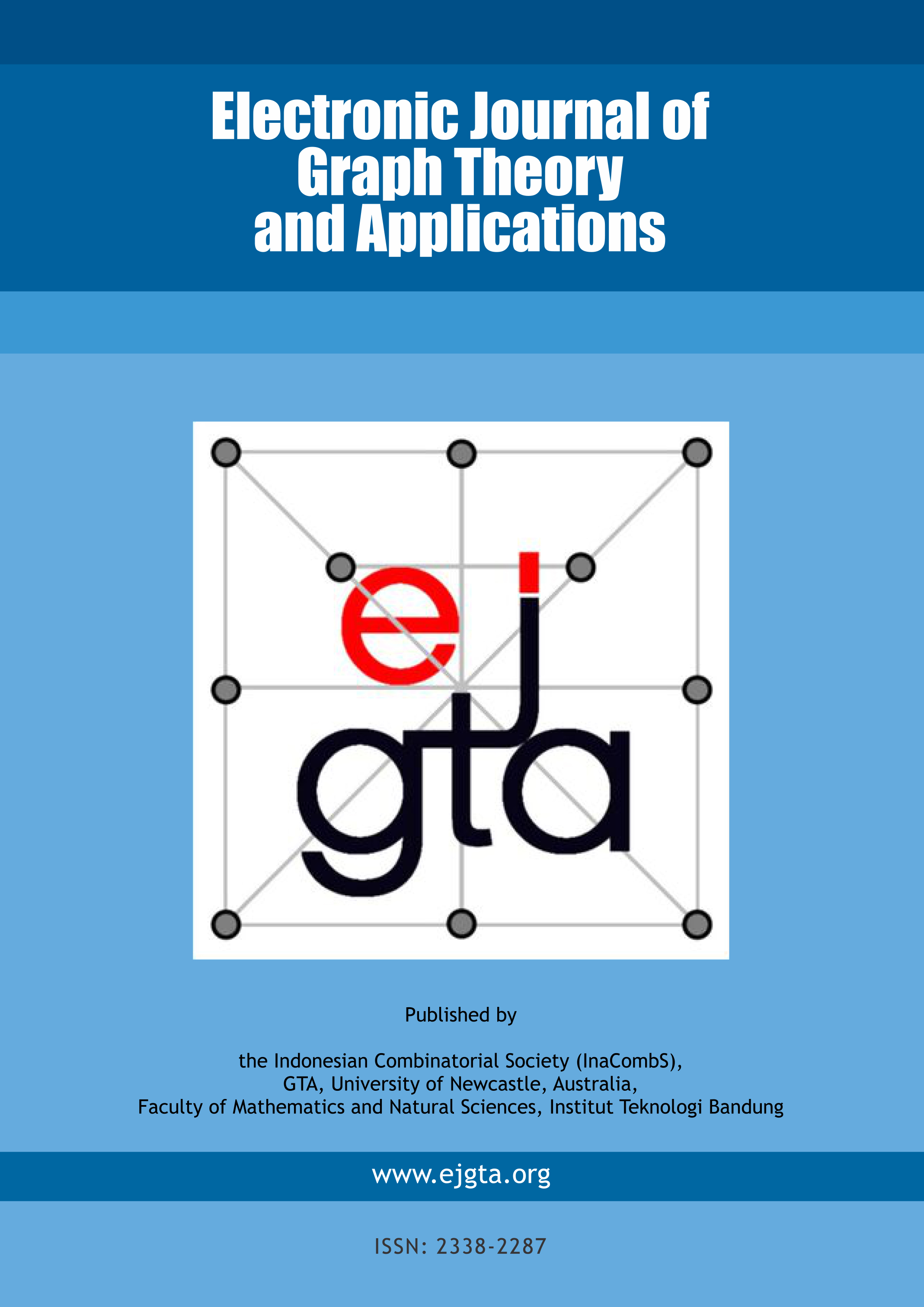Variations on Ramsey numbers and minimum numbers of monochromatic triangles in line $2$-colorings of configurations
Abstract
Keywords
Full Text:
PDFDOI: http://dx.doi.org/10.5614/ejgta.2023.11.2.8
References
A. Betten, G. Brinkmann, and T. Pisanski. Counting symmetric configurations v3. Discrete Applied Mathematics, 99(1-3):331–338, 2000.
M. Boben. Irreducible (v3) configurations and graphs. Discrete mathematics, 307(3-5):331–344, 2007.
M. Bras-Amoros and K. Stokes. The semigroup of combinatorial configurations. In Semigroup forum, volume 84, pages 91–96. Springer, 2012.
S.A. Burr, P. Erdos, and J.H. Spencer. Ramsey theorems for multiple copies of graphs. Transactions of the American Mathematical Society, 209:87–99, 1975.
S.A Burr and V. Rosta. On the Ramsey multiplicities of graphs—problems and recent results. Journal of Graph Theory, 4(4):347–361, 1980.
D. Conlon. On the Ramsey multiplicity of complete graphs. arXiv preprint arXiv:0711.4999, 2007.
H.S.M. Coxeter. Configurations and maps. In Bulletin of the Mathematical Society, volume 53, pages 921–921, 1947.
C. Dalfo and M.A. Fiol. Graphs, friends and acquaintances. Electronic Journal of Graph Theory and Applications (EJGTA), 6(2):282–305, 2018
P. Dembowski. Finite Geometries, volume 44. Springer Science & Business Media, 1997.
N. Do. Party problems and Ramsey theory. Vinculum, 56(2):18–19, 2019.
A.W. Goodman. On sets of acquaintances and strangers at any party. The American Mathematical Monthly, 66(9):778–783, 1959.
R.L. Graham, B.L. Rothschild, and J.H. Spencer. Ramsey Theory, volume 20. John Wiley & Sons, 1990.
B. Grunbaum. Configurations of Points and Lines, volume 103. American Mathematical Soc., 2009.
F. Harary. Graph Theory (on Demand Printing Of 02787). Addison-Wesley series in mathematics. Avalon Publishing, 1969.
F. Harary and G. Prins. Generalized Ramsey theory for graphs iv, the Ramsey multiplicity of a graph. Networks, 4(2):163–173, 1974.
https://github.com/benjaminpeet/minmonotrianglesofconfigurations. GAP code for minimum number of monochromatic triangles in a configuration, 4 2022.
M.S. Jacobson. A note on Ramsey multiplicity. Discrete Mathematics, 29(2):201–203, 1980.
G. Kery. On a theorem of Ramsey. Matematikai Lopok, 15:204–224, 1964.
N.S. Mendelsohn, R. Padmanabhan, and B. Wolk. Planar projective configurations (part 1).Note di Matematica, 7(1):91–112, 1987.
T. Pisanski and B. Servatius. Configurations from a graphical viewpoint. Springer Science & Business Media, 2012.
A.J. Schwenk. Acquaintance graph party problem. The American Mathematical Monthly, 79(10):1113–1117, 1972.
D.R. Silaban, E.T. Baskoro, and S. Uttunggadewa. Restricted size Ramsey number for path of order three versus graph of order five. Electronic Journal of Graph Theory and Applications,5(1):55843, 2017.
M.P. Van Straten. The Topology of the Configuration of Desargues and Pappus. PhD thesis, University of Notre Dame, 1947.
Refbacks
- There are currently no refbacks.
ISSN: 2338-2287

This work is licensed under a Creative Commons Attribution-ShareAlike 4.0 International License.



